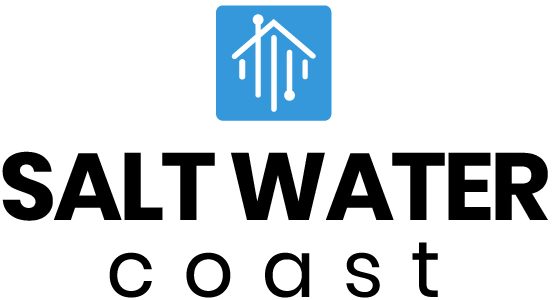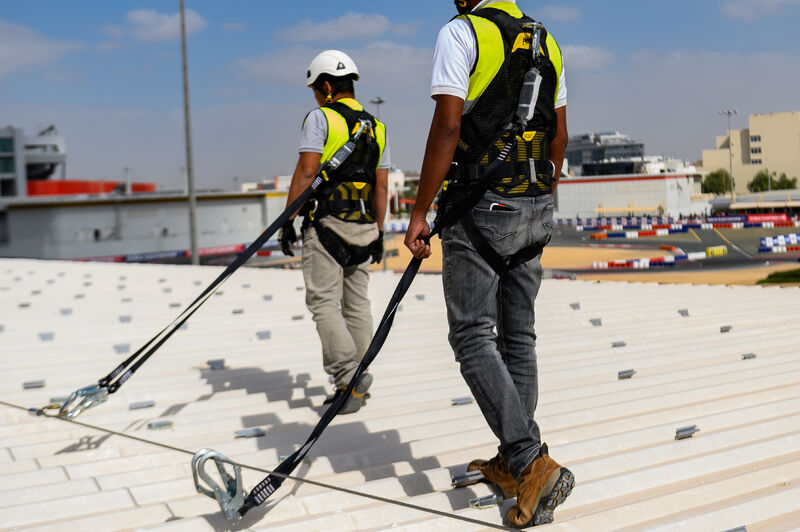The importance of roof safety cannot be overstated, especially considering the potential risks associated with working at heights. Whether it’s residential, commercial, or industrial structures, the installation of roof safety systems, including safety lines for roof work, is a crucial aspect of ensuring the well-being of individuals involved in construction, maintenance, or any activity that requires access to rooftops. In this comprehensive article, we will delve into the myriad benefits of installing roof safety systems, exploring how these systems not only mitigate risks but also contribute to increased productivity, regulatory compliance, and overall peace of mind. By incorporating safety lines for roof work, one can enhance the overall safety measures and provide an additional layer of protection for those working in elevated environments.
I. Risk Mitigation and Injury Prevention:
The primary objective of roof safety systems is to reduce the risk of accidents and injuries associated with working at heights. Falls from roofs can result in severe injuries and even fatalities, making it imperative to implement robust safety measures. Roof safety systems, such as guardrails, safety nets, and personal fall arrest systems, act as physical barriers and safety nets, preventing workers from falling off roofs and minimizing the impact in case of an accidental slip or trip.
A. Guardrails:
Guardrails are a fundamental component of roof safety systems. Installed along the edges of rooftops, they create a protective barrier that acts as a visible and physical deterrent against accidental falls. These guardrails are often made from durable materials such as aluminum or steel, providing both stability and longevity. In addition to preventing falls, guardrails also contribute to a safer working environment by establishing designated safe zones.
B. Safety Nets:
Safety nets serve as a secondary level of protection, especially in situations where the use of guardrails alone may not be sufficient. These nets are strategically positioned to catch and arrest the fall of a worker, minimizing the potential for injuries. Safety nets are particularly effective in scenarios where workers may need to move freely on the roof, such as during roofing installations or maintenance tasks.
C. Personal Fall Arrest Systems:
Personal fall arrest systems, including harnesses, lanyards, and anchor points, are critical for individuals working in elevated positions. These systems are designed to arrest a fall and prevent the worker from hitting the ground. Proper training and usage of personal fall arrest systems are essential to ensure their effectiveness. When integrated into a comprehensive roof safety plan, personal fall arrest systems significantly enhance worker safety.
II. Increased Productivity and Efficiency:
Beyond the obvious benefits of injury prevention, installing roof safety systems can also positively impact productivity and efficiency in various ways.
A. Confidence and Morale:
Knowing that robust safety measures are in place instills confidence in workers, allowing them to focus on their tasks without constant worry about potential accidents. A sense of security contributes to higher morale, creating a more positive and productive work environment.
B. Uninterrupted Workflow:
When safety measures are integrated seamlessly into the work environment, workers can move freely and confidently on the roof, completing tasks without unnecessary interruptions. This uninterrupted workflow not only enhances productivity but also reduces the likelihood of errors that may arise from distractions caused by safety concerns.
C. Reduced Downtime:
Accidents on construction sites often lead to downtime for investigations, medical interventions, and paperwork. Installing roof safety systems significantly reduces the occurrence of accidents, minimizing downtime and ensuring that projects stay on schedule.
III. Regulatory Compliance:
Adhering to safety regulations and standards is not only a legal requirement but also an ethical obligation for employers and project managers. Installing roof safety systems ensures compliance with local, state, and federal regulations, thereby mitigating legal risks and liabilities.
A. OSHA Regulations:
The Occupational Safety and Health Administration (OSHA) in the United States mandates specific safety measures for working at heights. Failure to comply with OSHA regulations can result in penalties and legal consequences. Roof safety systems, designed and installed in accordance with OSHA guidelines, provide a comprehensive solution for regulatory compliance.
B. Industry-Specific Standards:
Different industries may have unique safety requirements based on the nature of their operations. Installing industry-specific roof safety systems ensures compliance with standards relevant to the specific challenges and risks associated with that industry.
IV. Long-Term Cost Savings:
While the initial investment in roof safety systems may seem substantial, the long-term cost savings outweigh the upfront expenses. Prevention of accidents and injuries leads to a reduction in medical costs, insurance premiums, and potential legal liabilities.
A. Medical Costs:
Accidents resulting from falls can lead to significant medical expenses, including emergency room visits, surgeries, rehabilitation, and ongoing medical care. By preventing these accidents, roof safety systems contribute to substantial savings in medical costs.
B. Insurance Premiums:
Insurance companies often consider the safety measures implemented by businesses when determining premiums. A track record of implementing effective roof safety systems can lead to lower insurance premiums, reflecting the reduced risk of accidents and injuries.
C. Legal Liabilities:
In the absence of proper safety measures, businesses expose themselves to legal liabilities in the event of accidents. Legal proceedings, settlements, and compensation claims can incur substantial costs. Roof safety systems act as a preventive measure, minimizing the likelihood of accidents and the associated legal consequences.
V. Enhanced Property Value and Reputation:
Beyond the immediate benefits of safety and cost savings, the installation of roof safety systems can enhance the overall value of a property and positively impact the reputation of businesses and contractors.
A. Property Value:
Commercial and industrial properties with comprehensive safety systems in place are perceived as safer and more attractive to potential buyers or tenants. This can contribute to increased property value and facilitate real estate transactions.
B. Reputation:
A commitment to safety reflects positively on the reputation of businesses and contractors. Clients and stakeholders are more likely to trust and engage with entities that prioritize the well-being of their workers. A positive reputation can lead to increased business opportunities and long-term success.
VI. Types of Roof Safety Systems:
Understanding the diverse range of roof safety systems allows businesses and contractors to tailor their safety measures to the specific needs of their projects. Here are some common types of roof safety systems:
A. Guardrail Systems:
Guardrails are physical barriers installed along the edges of roofs to prevent accidental falls. They are available in various materials, including aluminum, steel, and fiberglass.
B. Safety Net Systems:
Safety nets are suspended below the work area to catch and arrest falling individuals. They are particularly effective in scenarios where guardrails alone may not provide adequate protection.
C. Personal Fall Arrest Systems:
Personal fall arrest systems consist of harnesses, lanyards, and anchor points. These systems are designed to arrest falls and prevent individuals from hitting the ground.
D. Roof Anchors:
Roof anchors provide secure attachment points for personal fall arrest systems. They are installed on the roof structure and are essential for ensuring the effectiveness of fall arrest systems.
E. Skylight Screens:
Skylight screens are installed over skylights to prevent falls through these openings. They are designed to withstand the weight of a person and serve as a protective barrier.
VII. Conclusion:
In conclusion, the installation of roof safety systems is a multifaceted investment that goes beyond mere compliance with regulations. By prioritizing the safety and well-being of workers, businesses and contractors can enjoy a range of benefits, including risk mitigation, increased productivity, regulatory compliance, long-term cost savings, enhanced property value, and a positive reputation. As the construction and maintenance industries continue to evolve, the importance of comprehensive roof safety systems cannot be overstated, making them an integral part of any responsible and forward-thinking approach to work at heights.

